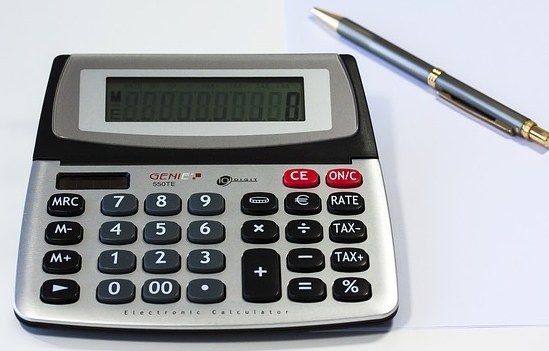Subtraction Lessons: Tips for Learning and Understanding Equations
If your child needs help with subtraction lessons, I am here to help. Read on to find ideas and principles that will make learning equations much easier.
If you are looking for an actual step-by-step procedure for teaching subtraction facts, you can find that here. Put that together with the tips in this article, and you and your child can be well-prepared to learn subtraction!
Below, I outline five ideas for greater success with subtraction lessons.
1. Use Concrete Materials
 Using your child's favorite food items to teach subtraction equations can make lessons fun and motivating.
Using your child's favorite food items to teach subtraction equations can make lessons fun and motivating.Here’s a rule I wouldn’t ignore for any child who is first learning these concepts, regardless of who they are or whether or not they have a disability.
As I’ve emphasized in other articles on this site, concrete materials will help your child know what you’re talking about when you say or write “4”, “6”, “+”, “5 - 3 = 2”, and so on.
Otherwise, to them those numbers and equations may be meaningless symbols on a page.
So get yourself an abacus, or some blocks, or beads, or any other physical objects you have around the house that your child can use to count, add or subtract.
You can use anything you have: pencils, pens, blocks, beads, erasers, etc.
You can even use small food items. And while you’re at it, you can even let them eat the snacks as a reward for getting the equation right!
If you use their favorite foods, that could really keep their attention!
Crackers, berries, or grapes are an easy choice since you won’t need to cut them up. But if they love peaches or apples, you would be wise to go with their favorites.
2. Begin With Simple Equations and Then Move to More Complex Ones
It makes sense that the first subtraction lessons will involve taking away one object and then moving on to those that subtract two objects.
The one exception to this would be the equations in which you are subtracting zero. I’d save the zeros for later to avoid possible confusion. Because it may be harder for them to know what you are doing when you are subtracting zero (or nothing) if they don’t understand the concept of subtraction in the first place.
But once they understand the concept of subtraction, you’ll begin helping them memorize the equations. At that point, beginning with the zeros for memorization would make a lot of sense because those would be the easiest to learn.
3. Generalize Subtraction Concepts
One characteristic that many children with autism have in common is that it can be hard for them to generalize concepts they are learning.
What do I mean by that?
Kids with autism might learn something really well, but they will often have a hard time applying what they have learned to other things.
For example, if you always use an abacus to learn equations, your child might think that subtraction principles only apply to the beads on the abacus. They won’t automatically realize that subtraction works with other things, too.
So be sure to change things up. If you use food items during subtraction lessons, switch to beads or some other objects.
And keep changing it up. Because otherwise children with autism will likely think that subtraction concepts only apply to berries if all they ever use are berries.
Generalization is extremely important, not only for subtraction, but also for just about anything you teach your child.
For more information on how to help your child generalize concepts, check out this article.
4. Check the Answer

When you are first starting subtraction lessons, it may not be necessary to have them check their work to see if their answer is correct. And you don’t want to confuse matters by introducing too many concepts at once.
But later on when they understand subtraction really well, you can introduce a method of checking the answer to see if it is correct.
All they have to do is simply add the second number in the equation to the answer. The sum of those two numbers should equal the first number in the original subtraction equation.
For example, in the equation 5 - 3 = 2, they can check to see if 2 is the correct answer by adding 3 and 2. If they add up to equal the first number in the equation then the answer is correct.
3 + 2 = 5, so 5 - 3 = 2 is correct.
 Should subtraction lessons include the use of a calculator? First help your child understand the concept of subtraction, then consider using a calculator. If they love this device, it just might help them memorize the equations!
Should subtraction lessons include the use of a calculator? First help your child understand the concept of subtraction, then consider using a calculator. If they love this device, it just might help them memorize the equations!5. Use Math Flash Cards For Memorization
Once they understand these concepts pretty well, you can start using math flash cards during subtraction lessons to help them memorize the equations.
You can use ready-made cards from the store, print them out from a website, or write them out yourself with colorful magic markers.
Check out this article on math flash cards for more information.
Use These Tips For Success in Learning
If you use these ideas, along with the procedure I've outlined in the article on subtraction methods, your child should have a much easier time learning these concepts. Put all that together with lots of practice and they will be well on their way to understanding subtraction.
Related Articles
1. Subtraction Methods for Teaching Equations to Your Child With Autism
2. Teaching Math to Your Child With Autism
3. Help Your Child Learn Math: Tips For Success
4. Using Math Flash Cards to Teach Various Concepts



New! Comments
Have your say about what you just read! Leave me a comment in the box below.